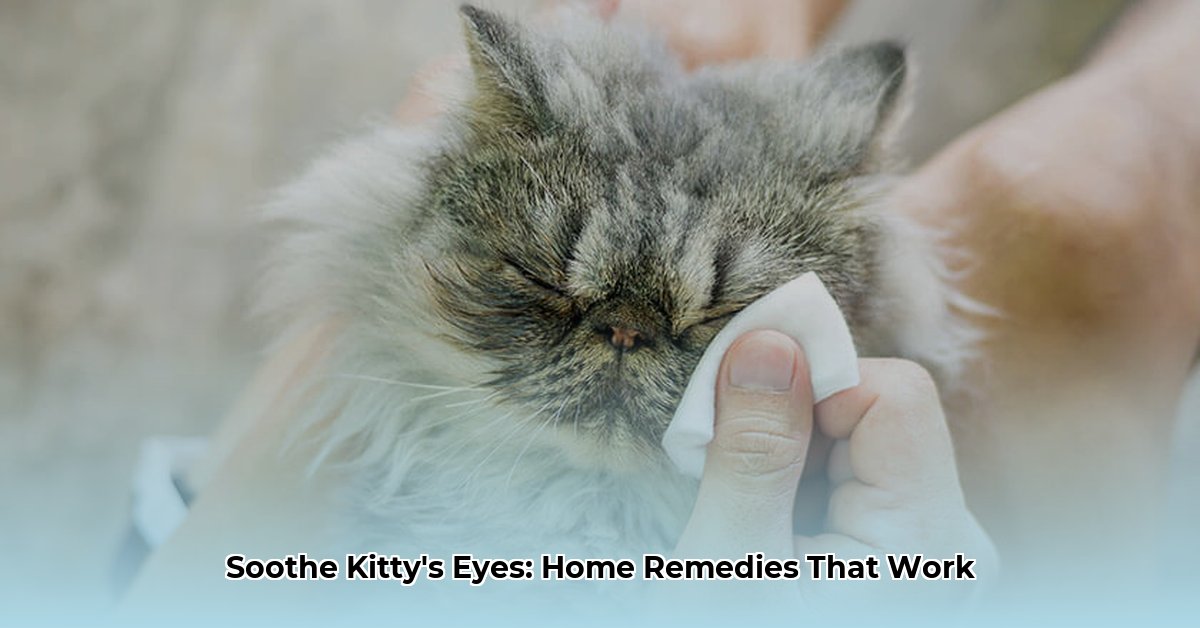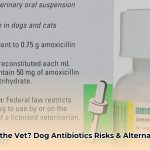Your cat’s bright, curious eyes are a window to their well-being. But what happens when those eyes become red, watery, or irritated? Conjunctivitis, commonly known as pink eye, is a frequent feline ailment that can cause discomfort and concern. This comprehensive guide will empower you with the knowledge and tools to soothe your cat’s irritated eyes safely and effectively. We’ll cover identifying symptoms, applying home remedies, recognizing when veterinary care is essential, and taking proactive steps to prevent future eye issues.
Recognizing Cat Conjunctivitis
Has your feline friend been pawing at their eye, blinking excessively, or squinting? These behaviors, coupled with redness, swelling, or discharge, may suggest conjunctivitis. This inflammation of the eye membranes can affect one or both eyes and range from mild to severe.
Here’s a closer look at common symptoms:
- Redness: The white part of the eye may appear bloodshot or pink.
- Swelling: The tissues surrounding the eye can look puffy or inflamed.
- Discharge: This can vary from watery and clear to thick, sticky, and potentially green or yellow.
- Squinting/Excessive Blinking: Discomfort often leads to these behaviors.
- Pawing at the Eye: A clear sign of irritation.
- Light Sensitivity: Cats with conjunctivitis may seek out darker areas.
Home Remedies: Soothing Your Cat’s Eyes
If you suspect your cat has conjunctivitis, some gentle home remedies can provide relief while you await veterinary consultation. These are not substitutes for professional care but can offer comfort in mild cases.
1. Warm Compress: Gentle Relief
- Soak a clean, soft cloth in warm (not hot!) water and wring out excess moisture.
- Gently hold the compress against your cat’s closed eye for 5-10 minutes, repeating several times daily.
- The warmth can soothe irritation, reduce swelling, and soften any crusty discharge.
2. Saline Rinse: Flushing Away Irritants (With Vet Approval)
- Use only sterile saline solution designed for eyes (not contact lens solution). Check with your vet before using this method.
- If your vet approves, gently flush the affected eye with the saline, following product instructions carefully.
- This can help remove debris and discharge, but some cats may resist, so proceed with patience.
3. Chamomile Tea Bag Compress: A Calming Touch (With Vet Approval)
- After consulting with your vet, brew a cup of chamomile tea and let the tea bag cool completely.
- Gently hold the cool, damp tea bag against your cat’s closed eye for a few minutes. Chamomile’s natural anti-inflammatory properties may offer relief.
- If your cat shows discomfort, discontinue use.
4. Gentle Discharge Removal: Maintaining Cleanliness
- With a sterile cotton ball or gauze dampened with sterile saline, gently wipe away any discharge.
- Always wipe outwards from the inner corner of the eye, avoiding direct contact with the eyeball.
When to Seek Veterinary Care: Recognizing Red Flags
Home remedies can provide temporary relief, but certain symptoms warrant immediate veterinary attention:
- Thick Green/Yellow Discharge: Often suggests a bacterial infection requiring antibiotics.
- Eye Bulging: Could be a sign of a serious underlying condition like glaucoma.
- Cloudy Cornea: May indicate a deeper eye problem needing urgent care.
- No Improvement/Worsening Symptoms: If symptoms persist or worsen after 24-48 hours of home care, consult a vet.
- Severe Pain/Discomfort: Intense squinting, excessive pawing, or other signs of distress indicate the need for professional help.
- Changes in Pupil Size/Shape: Any noticeable changes could signal a significant issue.
- Vision Changes: Cloudiness, bumping into objects, or other vision problems require immediate veterinary attention.
Preventing Future Eye Issues: Proactive Care
Protecting your cat’s eyes involves simple yet effective strategies:
- Regular Eye Cleaning: Gently clean the area around your cat’s eyes with a damp cotton ball to remove debris.
- Vaccinations: Keep vaccinations up-to-date to protect against viral infections that can cause conjunctivitis.
- Vet Checkups: Regular checkups help identify potential eye problems early.
- Healthy Lifestyle: A balanced diet, a stress-free environment, and regular playtime contribute to overall health, including eye health.
- Allergy Management: If allergies are suspected, work with your vet to identify and manage allergens.
- Environmental Control: Minimize dust and irritants in your cat’s environment.
Quick Reference Guide
| Symptom | Home Remedy | When to See a Vet |
|---|---|---|
| Redness, Swelling, Watery Discharge | Warm Compress, Saline Rinse (Vet Approved) | If symptoms worsen or persist for over 48 hours |
| Thick Green/Yellow Discharge | See a vet immediately | See a vet immediately |
| Bulging Eye, Cloudy Cornea, Severe Pain | See a vet immediately | See a vet immediately |
| Vision Changes, Lethargy | See a vet immediately | See a vet immediately |
Disclaimer: This guide is for informational purposes only and does not replace professional veterinary advice. Current veterinary knowledge is constantly evolving. While we aim for comprehensive information, consulting your veterinarian for diagnosis and treatment tailored to your cat’s specific needs is crucial. Different vets may have varying perspectives, so open communication is essential.
- Achieve Anesthesiology Work-Life Balance: Your Guide - December 4, 2025
- Unlock Young Doctors’ Work-Life Balance: Actionable Strategies Now - December 2, 2025
- Unlock Life Harmony: Work-Life Integration Guide - November 30, 2025
















